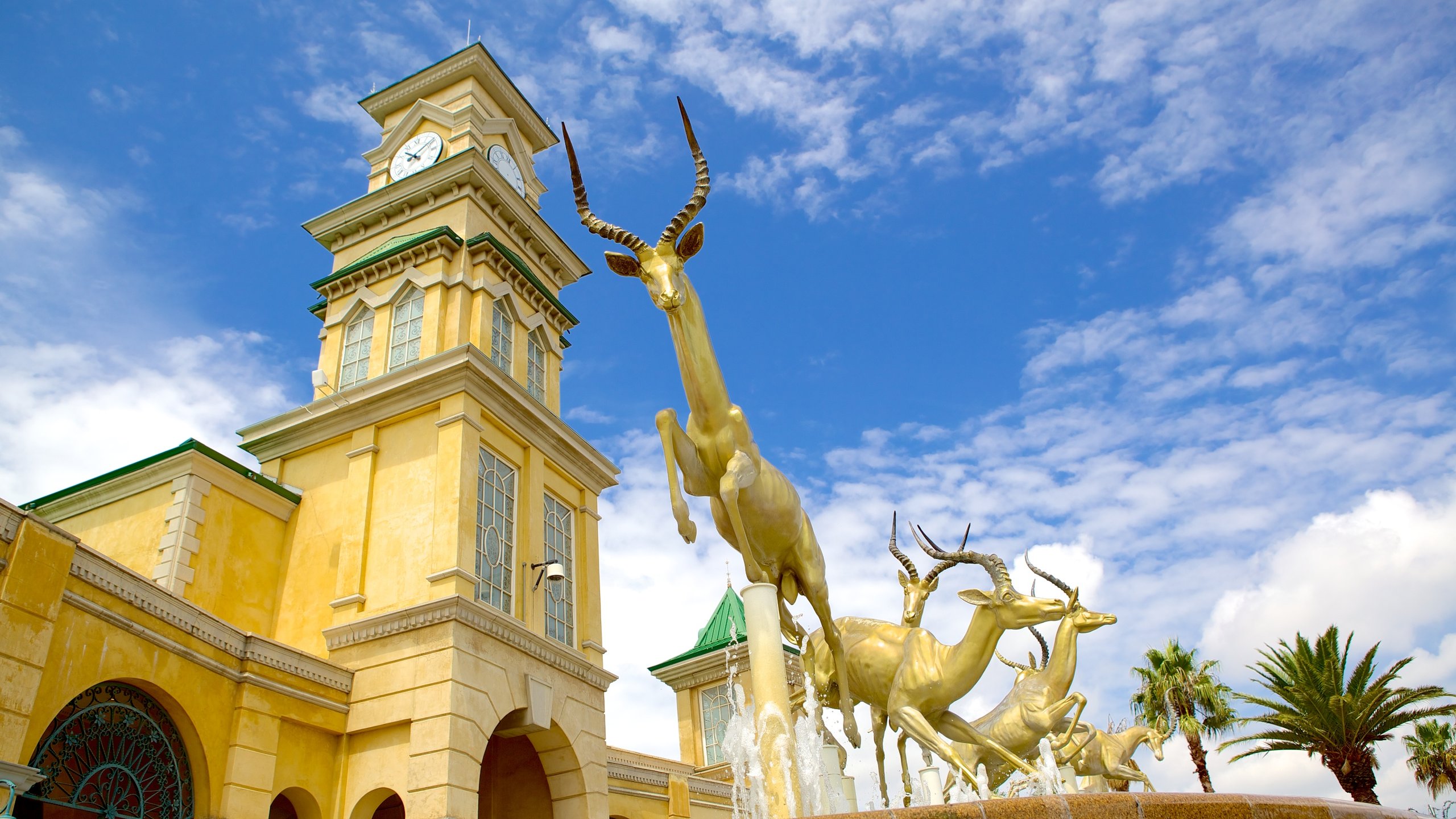Not known Facts About Johannesburg North Attractions
Not known Facts About Johannesburg North Attractions
Blog Article
The Buzz on Johannesburg North Attractions
Table of Contents4 Simple Techniques For Johannesburg North AttractionsIndicators on Johannesburg North Attractions You Need To KnowJohannesburg North Attractions Fundamentals ExplainedThe Main Principles Of Johannesburg North Attractions Johannesburg North Attractions for DummiesJohannesburg North Attractions Can Be Fun For Anyone
The city grew on the side of the Witwatersrand Main Coral reef, a below ground stratum of gold-bearing quartz-silica empire that arcs for hundreds of miles beneath the Highveld - Johannesburg North attractions. Most of the gold mines in the city ceased operation in the 1970s, however in its day the Witwatersrand gold industry accounted for more than 40 percent of the globe's annual gold production.Johannesburg has a pleasant environment. Summer temperatures average concerning 75 F (24 C); winter months temperatures average regarding 55 F (13 C) and just sometimes dip below freezing. The city delights in regarding 8 hours of sunlight per day in both winter season and summer. Rainfall averages concerning 28 inches (700 millimetres) per annum, however the overall varies considerably from year to year.
What rain the city obtains falls practically exclusively in the summertime, usually in stunning late-afternoon electrical storms. Air pollution positions a significant problem, particularly in the wintertime months, when thermal inversions impede the westward circulation of air from the Indian Sea. Pollution is most serious in the densely cleared up Black towns on the city's perimeter, where numerous homeowners still rely upon coal for fuel.

Some Known Facts About Johannesburg North Attractions.
The equilibrium of the city is inhabited by whites. Lodging differs in personality and top quality. Soweto is well-known for its endless rows of municipally built, two-room matchbox homes, yet it additionally has a few prosperous territories along with bristling squatter camps, where 10s of thousands live without water, electricity, or sanitation facilities.
Physical development, although somewhat limited by transport, proceeded promptly as immigration to South Africa, and Johannesburg specifically, increased considerably. This issue was solved in the 1930s when the vehicle was introduced in automation to South Africa. Cars were, essentially, constrained to the well-off, and permitted them to relocate to the north of the city and commute into the centre.
Many inadequate suburbs were combined, with poor blacks and whites living together, although the well-off residential areas were normally booked for whites.
The previous system of eleven numbered areas was reorganised in 2006. Marshalltown, as seen from the top of the Carlton Centre. The M1 and M2 run behind the structures, and the southerly suburbs expand past the freeway limit. The internal city of Johannesburg is located within the city's Region F. The number of people living in the internal city on a casual basis is unknown, as several are unlawful immigrants. The joblessness, education and learning, and age accounts of the area are all unknown, due to the difficulty of acquiring trustworthy info about the area.
Getting My Johannesburg North Attractions To Work
Centred on the CBD, the like it region consists of the suburbs of Yeoville, Bellevue, Troyeville, Jeppestown, and Berea to the eastern. To the west it spreads out to Pageview (Johannesburg North attractions) and Fordsburg. There are small industrial areas to the south, such as City West-Denver and Benrose. Around 800,000 commuters pass via the page central city every day, and it works as a regional purchasing node for visitors from the southern suburban areas. Yeoville and Bellevue have a mix of apartment and single property systems on tiny lots. The area lies on a hilly divide that ranges from eastern to west. The most conspicuous geographical attribute is Observatory Ridge, which is named for the huge observatory located on it. The recreational rooms are no much longer used, as a result of security problems.

What Does Johannesburg North Attractions Do?
R. Tambo International Flight Terminal). The eastern residential areas are some of the earliest areas of Johannesburg, there are huge neighborhoods of Jewish and other European backgrounds, the bulk of the population is English speaking. There are three fairway along with a variety of safeguarded ridges with viewsites. There are a number of well-developed and up-market here are the findings enjoyment and buying locations in the east such as the Eastgate Shopping Center and the Greenstone mall.
Originally constructed to house male migrant employees, lots of have been enhanced as residences for couples and households. The residential area was not historically permitted to develop employment centres within the location, so practically all of its homeowners are commuters to various other components of the city.
Johannesburg North Attractions - The Facts
The N1 Western Bypass links the northern residential areas with the north-western residential areas. The houses in the northern suburban areas are primarily official, without any considerable locations of casual real estate, or housing that lacks an irreversible structure. This is a well established location, there is a trend of land use modification from residential to industrial, specifically along primary arterial roadways and around well-known nodes.
Roadways to the east and west are less well created, as there are no freeways taking a trip in that instructions. In the direction of the north border of the city, the thickness of advancement reduces, leaving huge locations of primitive land around Midrand.
Not known Incorrect Statements About Johannesburg North Attractions
The initial suburb to the north of the central city is Parktown, which lies on a hill overlooking the central city and Hillbrow. It has numerous rich citizens and Edwardian-style mansions, along with the Education and Clinical schools of the College of the Witwatersrand. The big concrete Charlotte Maxeke Johannesburg Academic Hospital controls the horizon of Parktown.
Report this page